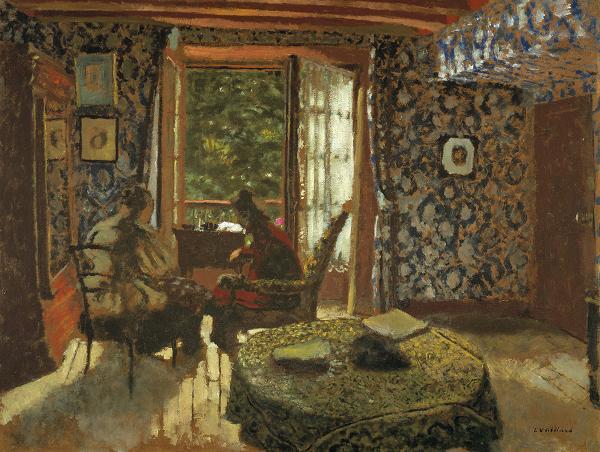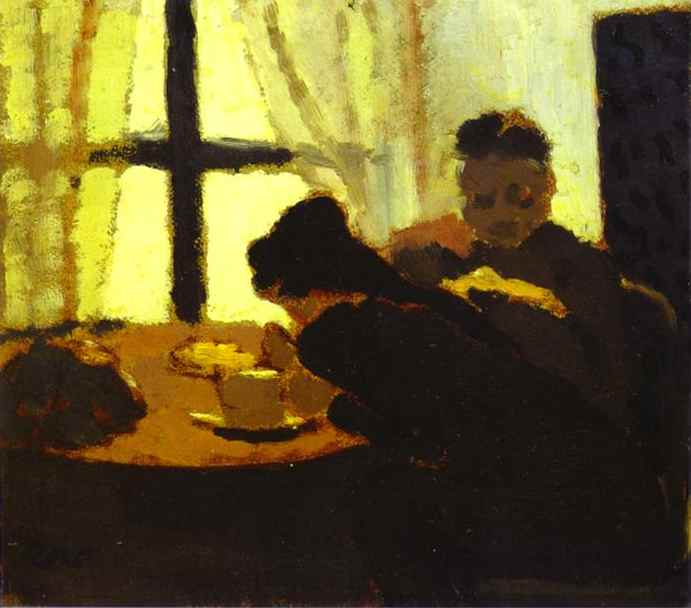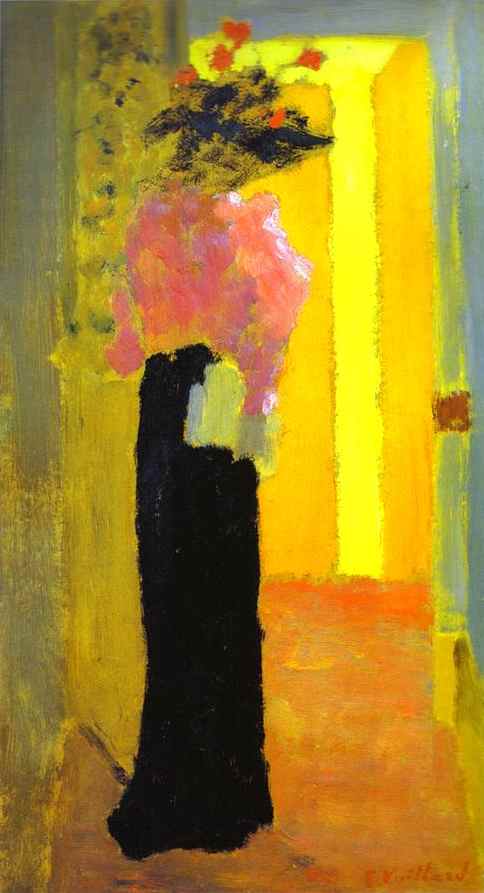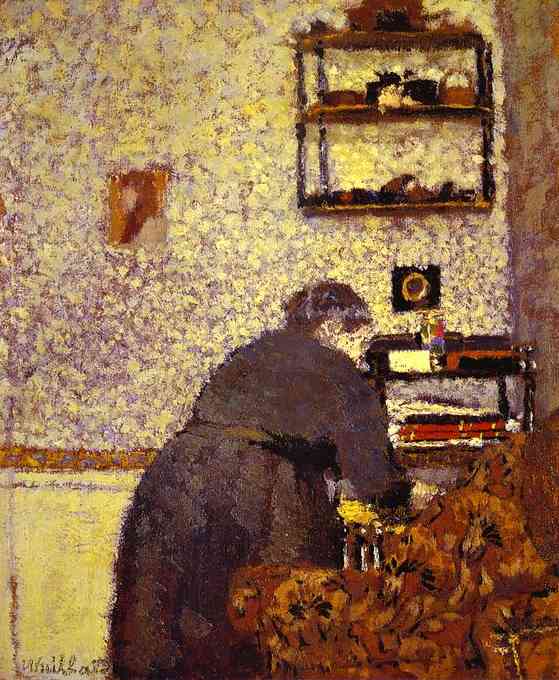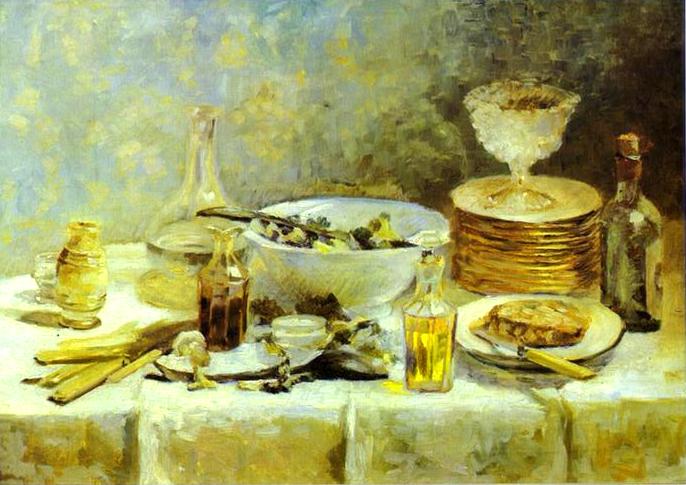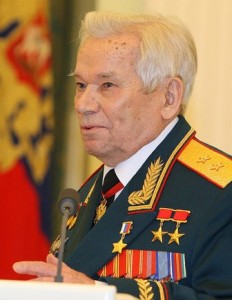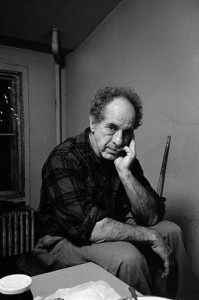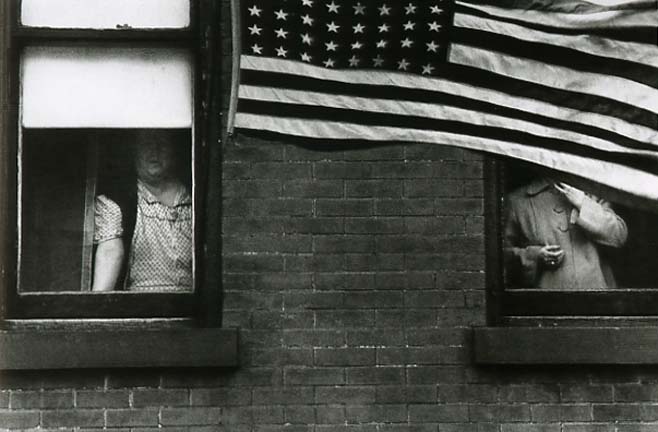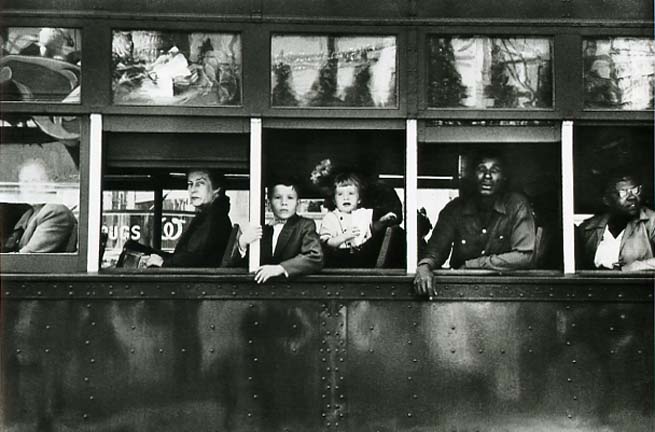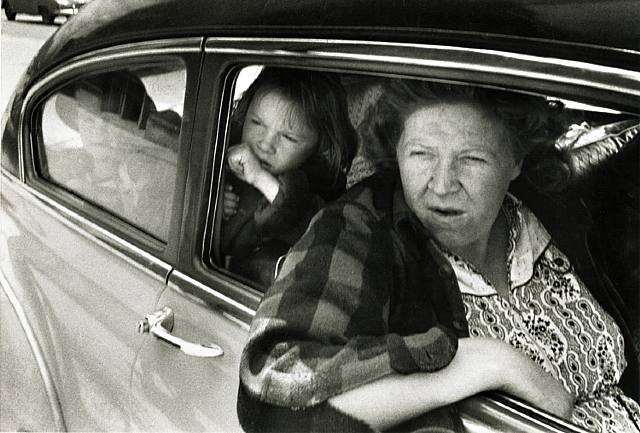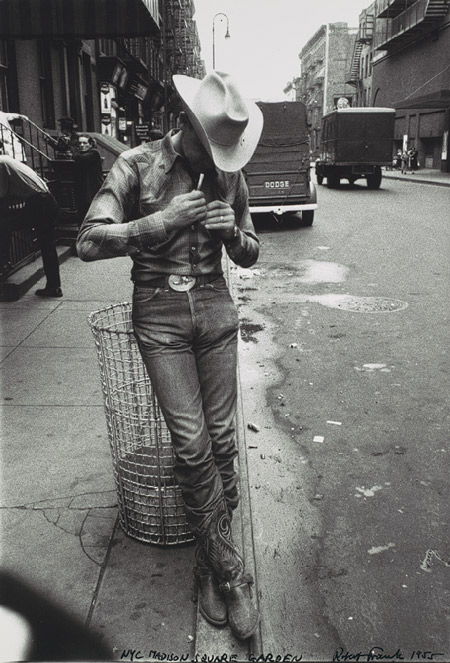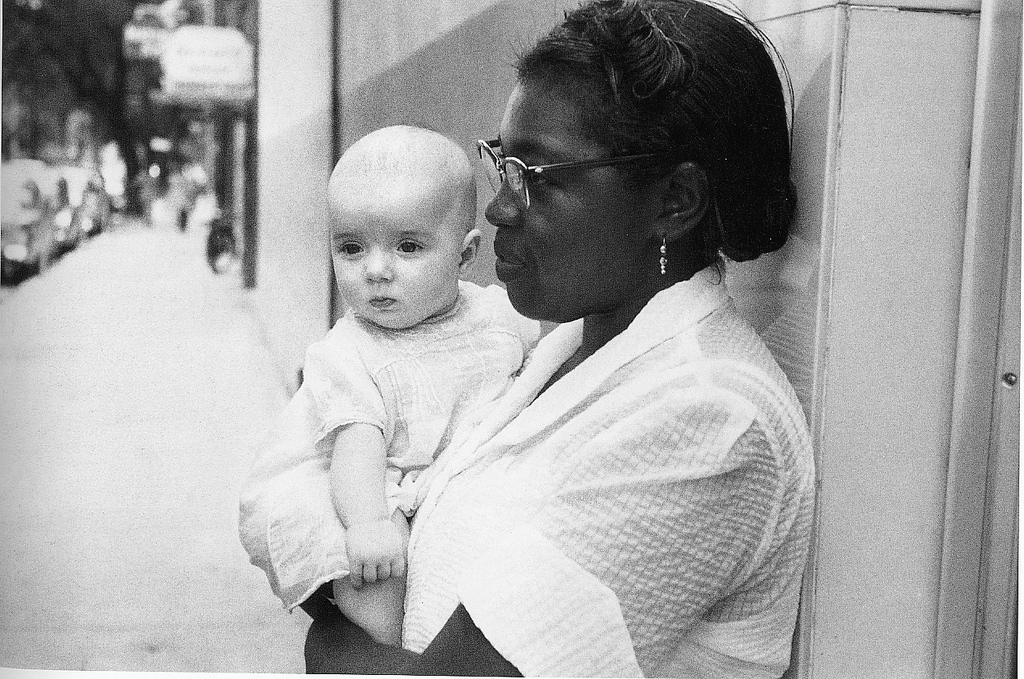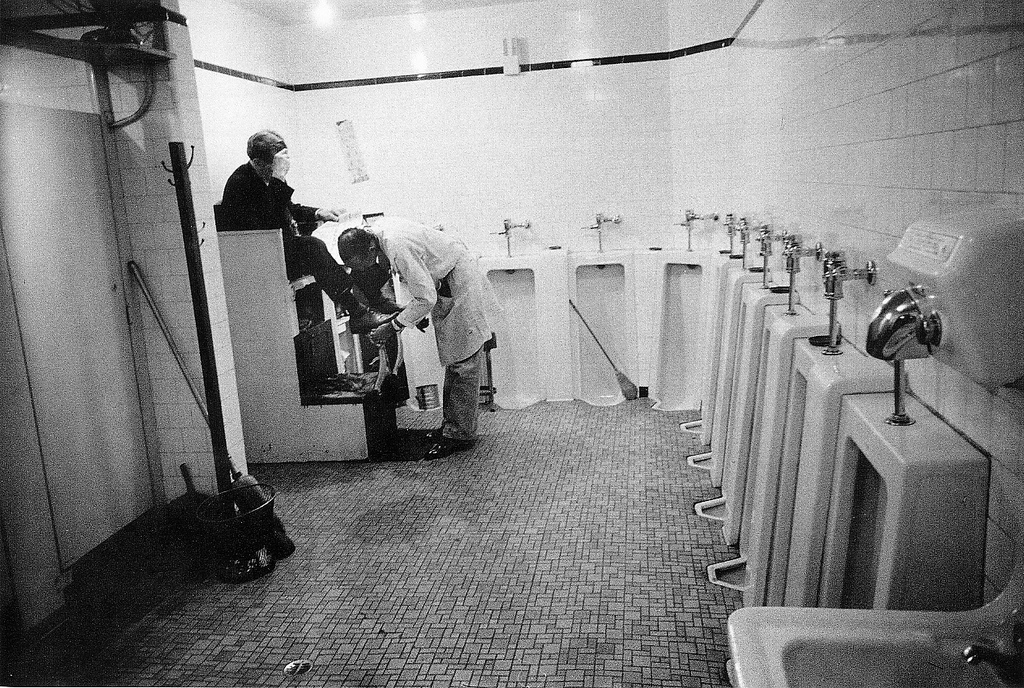Archives
19
Nov 11
Obama Speaks Aussie
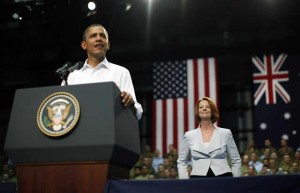 Down Under, Obama Has a “Chinwag”
Down Under, Obama Has a “Chinwag”
November 18, 2011
By Ben Zimmer
Visiting Australia earlier this week, President Obama broke the ice by injecting some Australian slang into his public speeches. He used a selection of Aussie-isms like chinwag and ear-bashing for comic effect, but it’s probably a good thing that he didn’t go overboard by trying to mimic a broad Australian English accent (often called “Strine”). British Prime Minister David Cameron, meanwhile, wasn’t so lucky: he got into some hot water for an ill-advised attempt at Strine.
At a state dinner at Parliament House in Canberra, Obama got the crowd laughing by peppering his speech with local slang:
As many of you know, I first came to Australia as a child. But despite my visits, I have to admit I never did learn to talk “Strine.” I know there is some concern here that your Australian language is being Americanized. So perhaps it’s time for us to reverse the trend. Tonight, with your permission, I’d like to give it a burl.
I want to thank the Prime Minister for a very productive meeting that we had today. I think she’ll agree it was a real chinwag. When Julia and I meet, we listen to each other, we learn from each other. It’s not just a lot of earbashing. That’s a good one — earbashing. I can use that in Washington. Because there’s a lot of earbashing sometimes.
In case you couldn’t figure it out from context, give it a burl means “give it a try”; a chinwag is a good discussion; and earbashing is tedious or scolding speech. Obama closed by saying:
The alliance between the United States and Australia is deeper and stronger than it has ever been — spot on — cracker-jack — in top nick.
Read the complete article here: http://www.visualthesaurus.com/cm/wordroutes/3042/
16
Nov 11
A Defining Photo
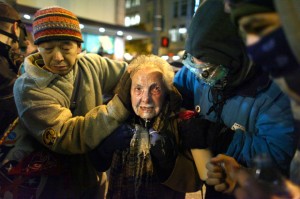 Eighty-Four year old Dorli Rainey was the victim of pepper spray on Tuesday night.
Eighty-Four year old Dorli Rainey was the victim of pepper spray on Tuesday night.
She was participating in an Occupy Seattle protest march that spilled into the streets. When the police arrived to control the crowd, she was right there in the front lines.
Protests are nothing new to her; she is a long time political activist and is well known in the local political crowd. She even ran for mayor of Seattle in 2009, but dropped out saying she was too old. Current Seattle Mayor Mike McGinn knows her personally.
It’s no wonder that this photo has gone viral. It’s the defining photo that every photographer dreams of. Photographer Joshua Trujillo was in the right place at the right time.
 “She had her head down, and I could see the spray all over her face,” he said. “Then she lifted her head up and someone splashed another liquid in her face.”
“She had her head down, and I could see the spray all over her face,” he said. “Then she lifted her head up and someone splashed another liquid in her face.”
That’s when Trujillo and Rainey made eye contact through his camera — and when the photo happened.
“I recognized the moment as being something unique,” Trujillo said. “Photojournalists by nature go after the things that are unique, odd or extreme. Those are the things that affect people.”
He added: “In all my years in this profession, I’ve never seen anything like that.”
15
Nov 11
Guernica in 3D
An extremely well done animated interpretation of Picasso’s Guernica.
I believe Picasso himself would have approved of this work.
His desire to show three-dimensions on two-dimensional media is dramatically achieved in this work. I’ve always loved Guernica, and have now seen what I believe Picasso wanted to accomplish. I have a whole new appreciation for Guernica.
11
Nov 11
Édouard Vuillard
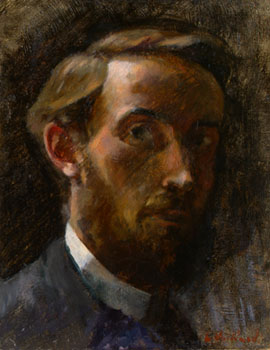 Jean-Édouard Vuillard (November 11, 1868 – June 21, 1940) was a French painter and printmaker associated with the Nabis.
Jean-Édouard Vuillard (November 11, 1868 – June 21, 1940) was a French painter and printmaker associated with the Nabis.
A warm (if reserved) man, Vuillard was a life-long bachelor and lived with his mother until her death. Perhaps due to this, his favorite subject matter centered on scenes of domesticity, usually of women performing routine tasks. His palette grew lighter and more colorful as he aged, and his work is characterized by careful juxtaposition of color, executed either in daubs or small stripes. Vuillard also worked in engraving and painted some amazing theatrical set designs.
10
Nov 11
Mikhail Kalashnikov: Born This Day in 1919
Mikhail Kalisnikov
November 10, 1919 – Still Living
Father of the infamous AK-47 assault rifle, Michail Kalishnikov wrote poetry as a youth and was expected to become a poet. He wrote six books and continued to write poetry all his life.
Kalashnikov was conscripted into the Red Army in 1938, and became a tank driver-mechanic, achieving the rank of senior sergeant (tank commander) serving on the T-34s of the 24th Tank Regiment, 12th Tank Division stationed in Stryi before the regiment retreated after the failed counterattack at Brody, June 1941. He was wounded in combat during the defence of Bryansk, October 1941, and released for six months recuperation due to illness. While in the hospital, he overheard some soldiers complaining about the Soviet rifles of the time.
He also had bad experiences with the standard infantry weapons at the time, and so he was inspired to start constructing a new rifle for the Soviet military. During this time Kalashnikov began designing a submachine gun.
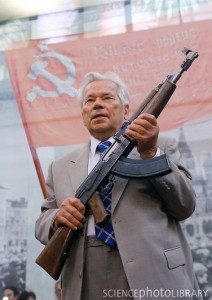
Mikhail Timofeyevich Kalashnikov (born 1919), Russian gun designer, holding the first-ever AK-47 assault rifle, at an official 60th anniversary event, held in 2007 in Moscow, Russia. Kalashnikov designed this rifle in 1947. Its simple design and ease of use led to it becoming one of the most widely used weapons over the next 60 years. Kalashnikov's awards include Hero of Socialist Labour, the Order of Lenin, and the Order of St Andrew, Russia's highest order of chivalry. He is also a Lieutenant General.
This process culminated in 1947, when he designed the AK-47 (standing for Avtomat Kalashnikova model 1947). In 1956, the AK-47 assault rifle became the Soviet Army’s standard issue rifle and went on to become Kalashnikov’s most famous invention.
The legacy of Kalashnikov’s rifles as the most popular assault rifles has prompted him to state that:
“When I see Bin Laden with his AK-47, I got nervous. But what can I do, terrorists aren’t fools: they too chose the most reliable guns.”
“I’m proud of my invention, but I’m sad that it is used by terrorists,” he said on a visit to Germany, adding:
“I would prefer to have invented a machine that people could use and that would help farmers with their work — for example a lawnmower.”(2002)
Source: Wikipedia
09
Nov 11
Robert Frank: Born This Day in 1924
Robert Frank, Photographer
November 9, 1924 – Still Shooting
“When people look at my pictures I want them to feel the way they do when they want to read a line of a poem twice.” – Robert Frank
Robert Frank is an 87 year old iconic American Photographer. Frank was born in Zurich. He is an important figure in American photography and his most notable work is the 1958 photographic book titled The Americans.
Frank was born in 1924 which allowed him to capture post war images which earned him modern-day comparisons to Tocqueville as his images were fresh and skeptical perspective of American society. He would later use film and video, and experimented with that medium.
Frank attitude to his fame is indifferent, fittingly, as his works chronically not celebrities but the marginal American on the street. It was his skepticism with secular religion of wholesomeness and cheer that gave him a unique visual.
A quote from photographer Elliott Erwitt about Robert Frank and his black and white photography:
Quality doesn’t mean deep blacks and whatever tonal range. That’s not quality, that’s a kind of quality. The pictures of Robert Frank might strike someone as being sloppy – the tone range isn’t right and things like that – but they’re far superior to the pictures of Ansel Adams with regard to quality, because the quality of Ansel Adams, if I may say so, is essentially the quality of a postcard. But the quality of Robert Frank is a quality that has something to do with what he’s doing, what his mind is. It’s not balancing out the sky to the sand and so forth. It’s got to do with intention.
The Americans showed a different America than the wholesome, nonconfrontational photo essays offered in some popular magazines. Frank’s subjects weren’t necessarily living the American dream of the 1950s: They were factory workers in Detroit, transvestites in New York, black passengers on a segregated trolley in New Orleans. Frank didn’t even get much support from the art world, he recalls.
“The Museum of Modern Art wouldn’t even sell the book,” Frank says. “But the younger people caught on.”
“Robert Frank…he sucked a sad poem right out of America onto film, taking rank among the tragic poets of the world.” – Jack Kerouac, Beat Generation poet and novelist
“I’d never seen anything like it, Robert Frank came out here and he just showed that you could see the USA until you spit blood.” – Ed Ruscha, photographer
08
Nov 11
Rickie Lee Jones: Born This Day in 1954
 Rickie Lee Jones
Rickie Lee Jones
November 8, 1954 – Still Rockin’
Rickie Lee Jones (born November 8, 1954) is an American vocalist, musician, songwriter, and producer. Over the course of a three-decade career, Jones has recorded in various musical styles including rock, R&B, blues, pop, soul, and jazz standards.
Rickie grew up in the wide open spaces of Arizona, a powerful imagery that would haunt much of her writing throughout her life. Her early childhood was spent in the company of imaginary friends. Her elder sister was married at the age of 15, while her elder brother was severely hurt in a motorcycle accident at the age of 16. The young Rickie Lee struggled socially, the itinerant outside, the family moving and changing schools every year or two. Luckily she was a gifted student, though teachers reported that she ‘daydreamed’ all day. It was hard enough being new, but having a name like ‘Rickie’ put her on the defensive in each new school. Like a boy named Sue, perhaps, Rickie got tough or died and her sense of self was indisputable. This uniqueness of character would eventually find a home on stage.
In 1977 she was noticed by rock journalist/attorney Stann Findelle who wrote about her in Performance Magazine and also helped her with some of her publishing. It was in 1978 that her faithful jack-of-all-trades on Westminster Avenue in Venice, offered to manage her, and in a few months had Bonnie Shiftman photographing her, Owen Sloan as her attorney, and major labels coming to see her three showcase performances, culminating in her being signed by Warner Bros. Records after a bidding war between three labels. The showcases were 30 minutes long, including “Easy Money”, “The Moon Is Made of Gold”, “Chuck E.’s In Love”, “Somewhere Over the Rainbow” as well as a few racy cover tunes. Warner Bros. knew Jones was “the real thing” and obtained a spot for her on Saturday Night Live the week of her release. They had also filmed what came to be an early music video — a twelve-minute, three-song movie, in which Jones was depicted as kind of girl next door street character. With Time magazine dubbing her “the Duchess of Coolsville” in its review of her first show, Jones’ image was solidified. Saturday Night Live portrayed her amidst garbage cans. Five months later she sold out two shows at Carnegie Hall.
Listen to “The Low Spark of High Heeled Boys” sung by Rickie (Song by Traffic):
05_The Low Spark Of High Heeled Boys
Rickie Lee Jones: Chuck E.’s In Love
07
Nov 11
Al Hirt: Born This Day in 1922
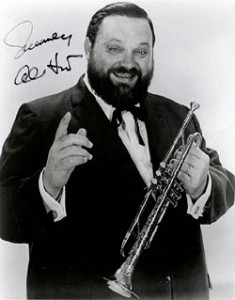 Al Hirt
Al Hirt
November 7, 1922 – April 27, 1999
Al Hirt was an American trumpeter and bandleader. He is best remembered for his million selling recordings of “Java”, and the accompanying album, Honey in the Horn (1963). His nicknames included ‘Jumbo’ and ‘The Round Mound of Sound’. Al was a member of The Louisiana Music Hall of Fame.
Alois Maxwell Hirt was born in New Orleans, Louisiana, the son of a police officer. At the age of six, he was given his first trumpet, which had been purchased at a local pawnshop. He would play in the Junior Police Band with the children of Alcide Nunez, and by the age of 16, Hirt was playing professionally, often with his friend Pete Fountain. During this time, he was hired to play at the local horse racing track, beginning a six-decade connection to the sport.
Hirt’s virtuoso dexterity and fine tone on his instrument soon attracted the attention of national labels and signed with RCA Victor Records. Hirt posted twenty two albums on the Billboard charts in the 1950s and 1960s. The albums Honey In The Horn and Cotton Candy were both in the Top 10 best sellers for 1964, the same year Hirt scored a hit single with his cover of Allen Toussaint’s tune “Java” (Billboard #4), and later won a Grammy Award for the same recording. Both Honey in the Horn and “Java” sold over one million copies, and were awarded gold discs.
His 1964 hit “Java” was used as the soundtrack to a recurring Muppet sketch that was performed on several variety shows as well as episode 122 of The Muppet Show.


